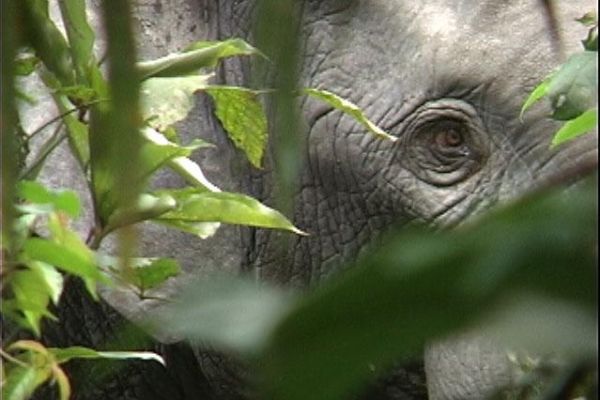One of the last remaining megaherbivores, forest elephants shape their environment by serving as seed dispersers and forest bulldozers as they eat over a hundred species of fruit, trample bushes, knock over trees and create trails and clearings. Their ecological impact also affects tree populations and carbon levels in the forest, researchers report, with significant implications for climate and conservation policies.
In a paper recently published in Nature Geoscience, a Saint Louis University biologist and his colleagues found that elephant populations in central African forests encourage the growth of slow-growing trees with high wood density that sequester more carbon from the atmosphere than fast growing species which are the preferred foods of elephants.
As forest elephants preferentially browse on the fast growing species, they cause high levels of damage and mortality to these species compared to the slow growing, high wood density species. The collapse of forest elephant populations will likely therefore causes an increase in the abundance of fast growing tree species at the expense of slow growing species, and reduce the ability of the forest to capture carbon.
Stephen Blake, Ph.D., assistant professor of biology at Saint Louis University, spent 17 years in central Africa doing, among other things, applied research and conservation work with elephants. While there, he collected a data set on forest structure and species composition in the Nouabalé-Ndoki Forest of northern Congo.
Read more at Saint Louis University
Image: Forest elephants engineer the ecosystem of the entire central African forest, and their catastrophic decline toward extinction has implications for carbon policy. (Credit: Stephen Blake, Ph.D.)


